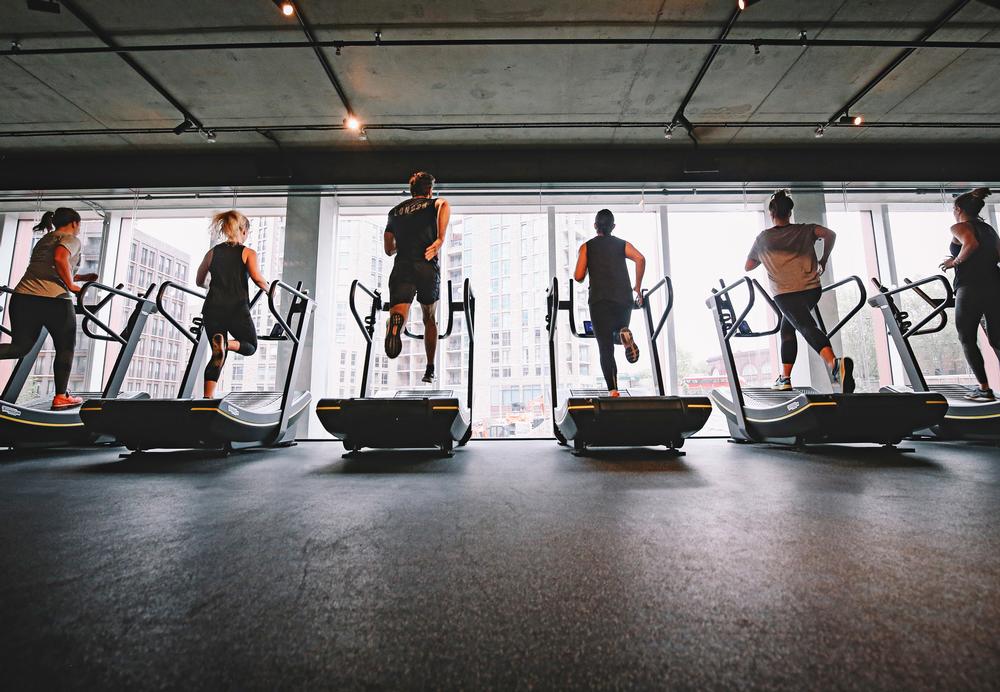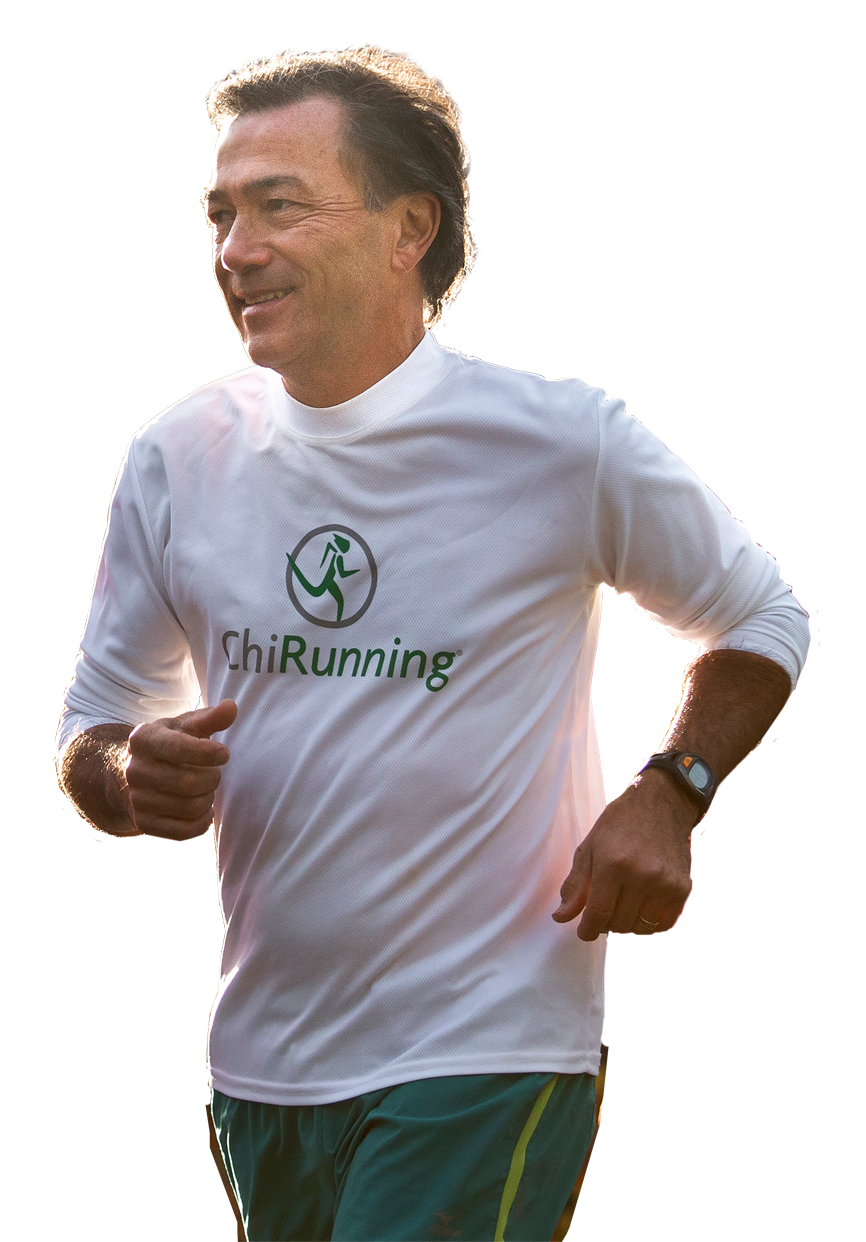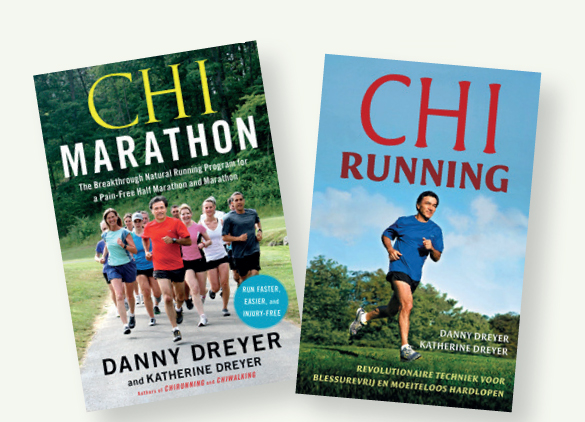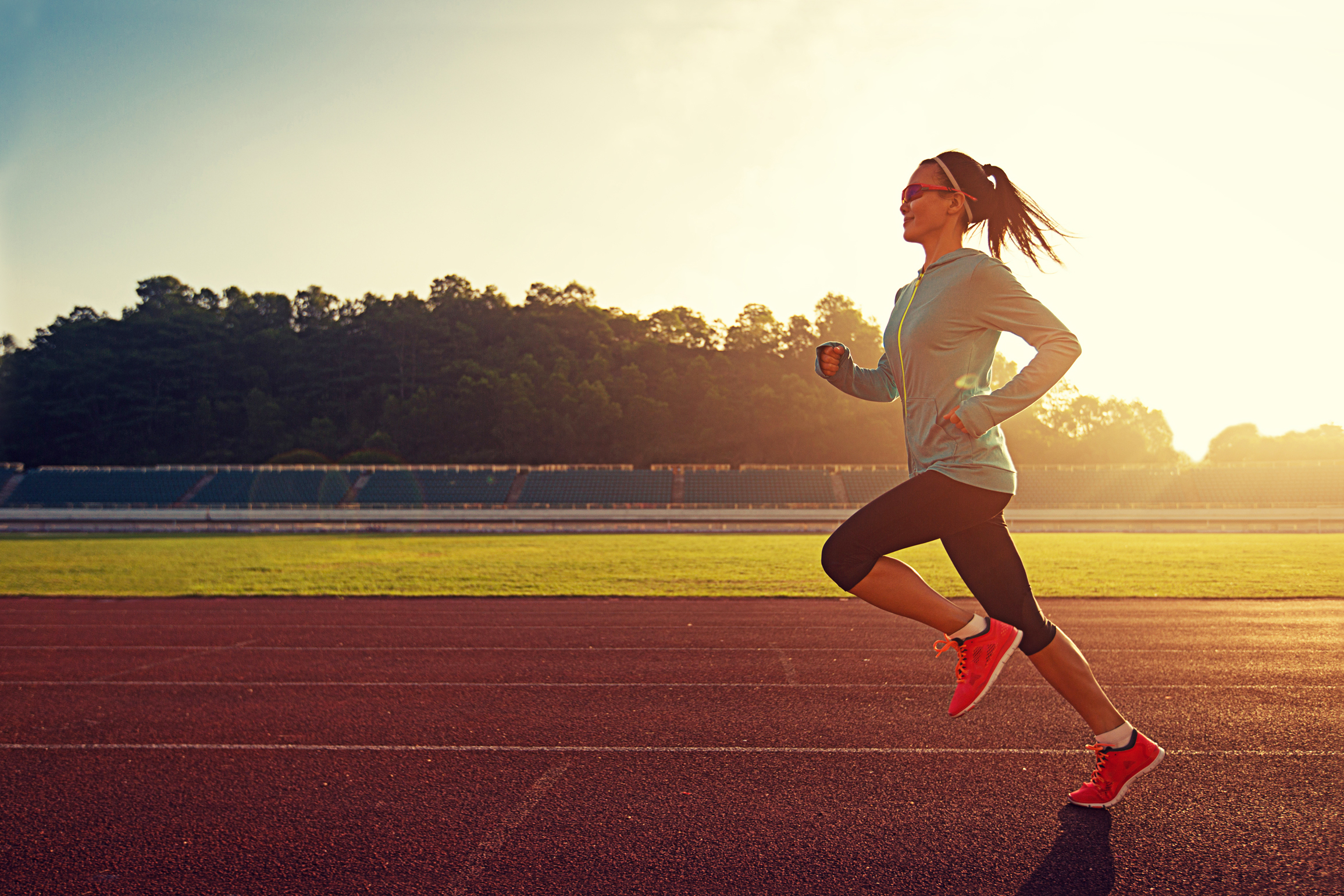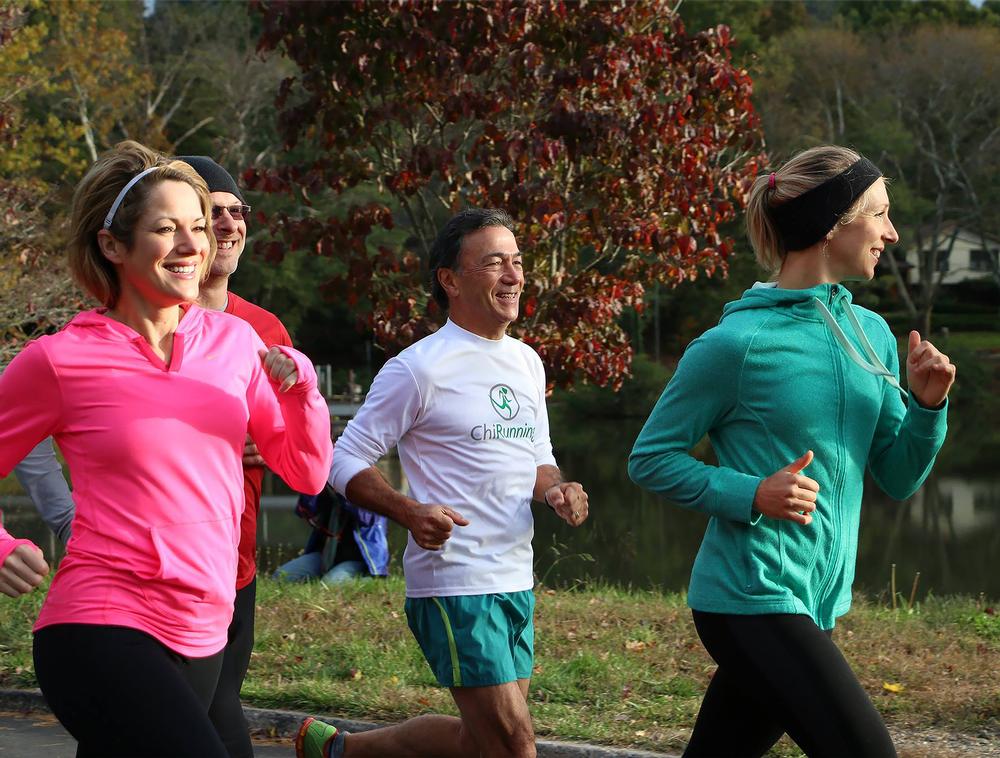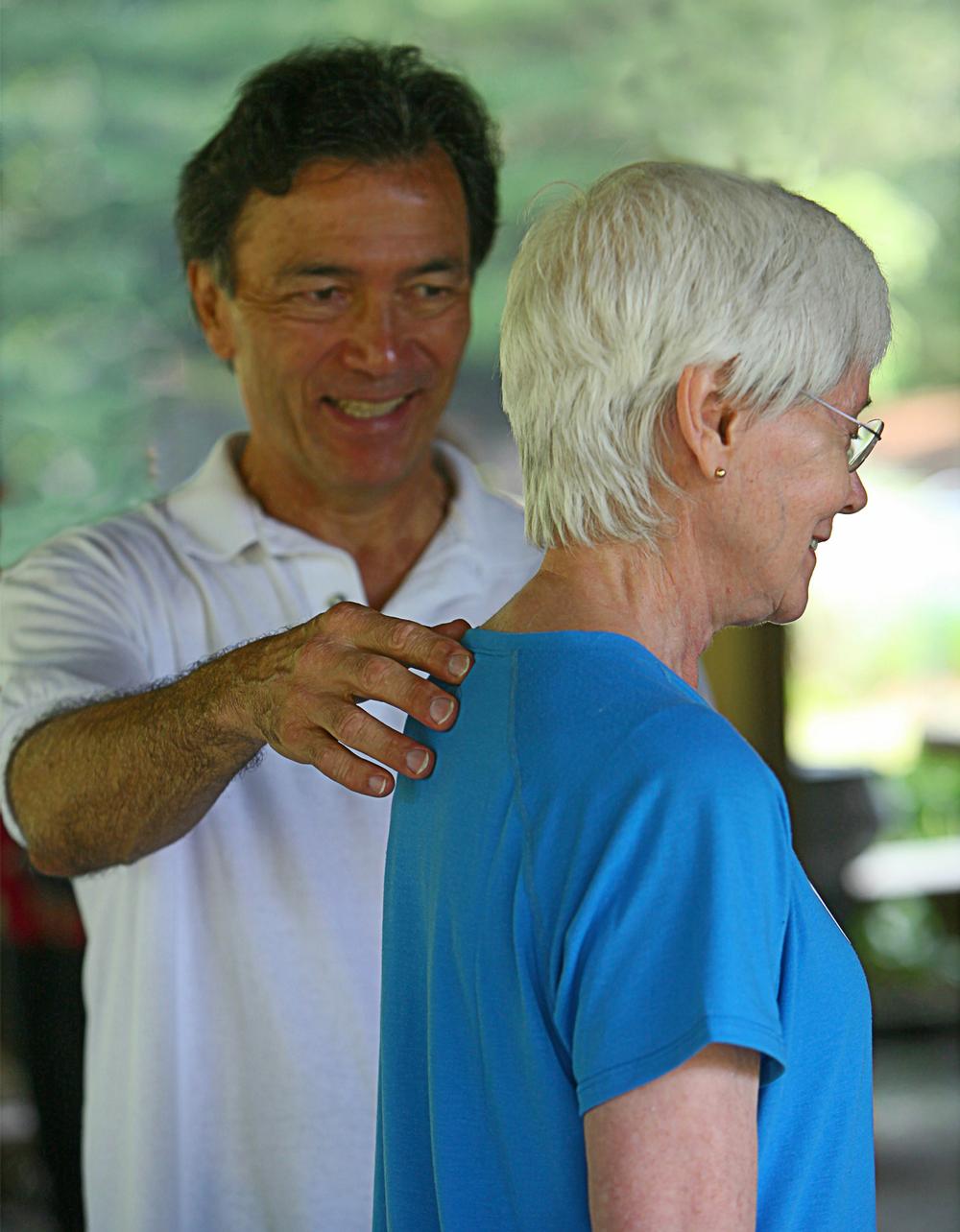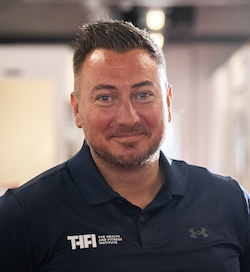I teach people how to run without using their legs,” says veteran ultra distance runner Danny Dreyer, who has created an efficient system of running which incorporates principles of t’ai chi and physics. “Imagine, if instead of running, all you have to do is pick up your feet to keep up with your forward fall.
“Instead of using your legs to push you forward as most people do, you engage your core and harness gravity while running. So, rather than using your own muscle power, your forward momentum comes from engaging the pull of gravity as you let the road move your legs rearward.”
Running without any effort may sound too good to be true, (especially to those used to slogging it out) but Dreyer says everyone can master this effortless way of running, because it’s what we all did when we were kids: before age and sitting down for long periods of time brought in stiffness and inflexibility, and height created a fear of falling.
“I wish I had a video of everyone who said “I can’t run” and then six weeks later are running and loving it,” says Dreyer. “Or triathletes who come to me because they love the swim and the bike, but hate the run, but then it becomes their favourite element. Or people who can step up from a half marathon to a full one without any significant increase in effort.
“ChiRunning really changes people’s perception of how they can move their body. I’ve taught all sorts of people, including those with prosthetic legs, hip and knee replacements and those who have a BMI in the 30s... It doesn’t matter what condition you’re in, we start slowly, make progress in small increments, start with ChiWalking and gradually build confidence.”
How does it work?
Dreyer was a seasoned ultra runner when he started bringing the principles of t’ai chi into his running practise and says it was a complete game changer, because he would still feel fresh at the end of a marathon.
Like t’ai chi, ChiRunning involves harnessing the power of the core, so the individual learns to move from the centre, rather than relying on the weaker extremities. It’s basically the same as how toddlers learn to walk.
“When we’re learning to walk we find our centre of balance and start to tip forward, with gravity, which is when we take a step to balance ourselves. So it’s about finding the sweet spot where you fall forward, but not so much that you fall,” says Dreyer. “If your body is falling forward because it’s being pulled by gravity, it can relax and you don’t have to push yourself forward.”
Postural alignment is the key to getting this right and the technique can take a while to nail. Dreyer says the quickest anyone has grasped it is 30 minutes, and the longest three months. But like a yoga practise, or tai chi, it’s something which you work on forever. “I’m still working on my technique after 20 years. You never perfect it, you just get better at learning,” says Dreyer.
Follow the Kenyans
The correct position for ChiRunning is to have the body in a straight line from the ankles to the head, but slightly tipped forward – from the ankles, not the waist. It’s how the Kenyan distance runners move and Dreyer says this is a cultural, rather than a genetic, method.
Dreyer warns against taking long strides out in front of the body. Although this is a common way of running, it is inefficient, leads to heel striking, jarring and injury risk.
People who run like this might be fast and consider themselves good runners, but their success will come from hard work, not an effortless flow, and they will likely get injured at some point.
ChiRunning follows the Kenyan style, where the foot naturally hits the ground beneath the body with a mid-foot strike, followed by a long stride behind. Propelled by gravity, the heels then come up high as a by product of everything else.
Continual running
Holding this forward position correctly takes core strength. Although some people need to take some time to strengthen the core before they can progress to ChiRunning, holding the correct postural alignment in every day life makes even the weak muscles stronger and speeds up progress.
“This is neural training - the mind tells the body how to move and if it’s moving incorrectly the neural pathway has to be changed,” says Dreyer. “But the more you train this way, the faster the old pathway will dissolve, which is why it has to be done repetitively, consistently and often.”
Dreyer says he likes his clients to practise all day every day – thinking about postural alignment while standing in line, or working at a desk and whenever they walk. “ChiRunning is mindful movement, the intention is to bring consciousness to whatever you’re doing, so you are never not paying attention,” he says.
“You’re not practising your running style just when you’re running: sensing your core and relaxing your arms and legs can happen all day. It’s a very different way to approach running than simply following a programme, it’s a completely holistic approach.”








